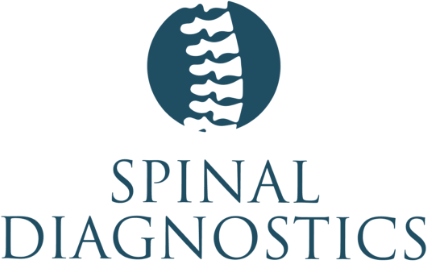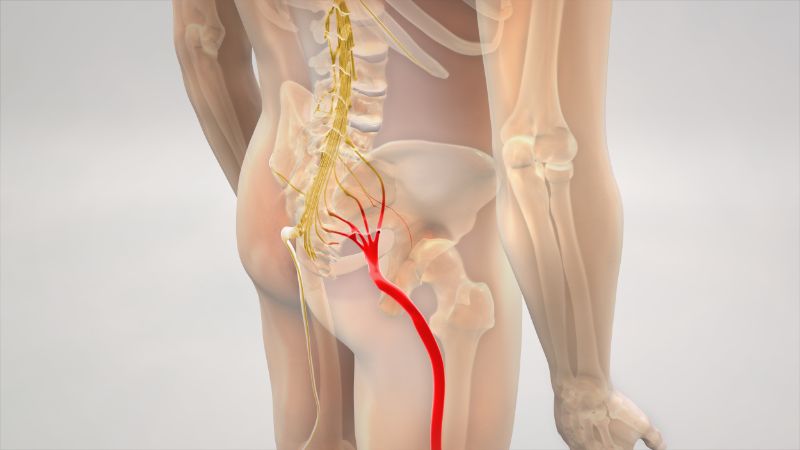Sciatica happens when the nerves in the lower back area extending into the legs become irritated or damaged. These nerves can become compressed due to multiple conditions, like a herniated disc, spinal stenosis, degenerative disc disease, or physical injuries. When this happens, it can cause severe pain, numbness in the legs or lower back, and weakness.
Having debilitating pain due to sciatica in the lumbar spine can severely hinder your quality of life. Receiving specialized care can help provide an accurate diagnostic and tailored treatment plan for each specific case. If left untreated, sciatica could cause irreversible damage to the spinal cord.
Sciatica refers to the pain originating from the sciatic nerve in the lower back area. It is often characterized by numbness, tingling, and discomfort in the lumbar spine, buttocks, and legs. Depending on its severity, it can range from mild to severe.
The sciatic nerve is the group of nerves that branch out from the spinal cord, expanding into the legs. It is the longest and thickest nerve in the body and controls the leg and foot muscles.
Damage to the sciatic nerve can happen due to multiple conditions and factors. These may include:
- Herniated disc: A herniated disc occurs when an intervertebral disc becomes damaged or displaced, leading to nerve irritation and lumbar pain.
- Spinal stenosis: Spinal stenosis occurs when there is increased pressure on the spinal nerves due to the narrowed spaces between the spine.
- Spondylolisthesis: This condition occurs when a vertebra slips onto another, causing the bones to pinch the sciatic nerve.
- Other causes: Physical trauma or spinal infections could also cause damage to the sciatic nerve.
Sciatica symptoms usually range from mild to severe, depending on the extent of damage to the sciatic nerve. The signs may vary from person to person due to the root cause of the discomfort and other factors like age or sex:
- Pain and discomfort that radiates from the lower back down the legs
- Numbness and tingling in the lumbar area
- Weakness and a limited range of mobility due to discomfort and stiffness
To diagnose a case of sciatica, a healthcare provider may follow these steps:
- Medical family history examination
- Lower back area and legs physical examination
- X-rays, MRIs, and CT Scans
- Measurement of the electrical activity of muscles and nerve cells (electromyography)
Timely intervention for sciatica can help prevent further complications in the lumbar spine. If not addressed, sciatica could potentially develop into a case of chronic pain, cause muscle weakness and limit daily activities.
Once your healthcare provider has confirmed a sciatica diagnosis, numerous treatment options are available. The ideal type of procedure will depend on how mild or severe your symptoms are.
These include non-invasive procedures that use physical therapy or exercises to alleviate pain symptoms. These can be used along with other minimally invasive intervention options or non-opioid medication.
Massage therapy focuses on areas that are causing pain and discomfort, releasing pain and pressure from the lumbar area. Chiropractic care uses techniques to align the spine. On the other hand, acupuncture uses needles to focus on pressure points, releasing lumbar pain.
In addition to physical therapy, multiple lifestyle modifications can help patients alleviate the symptoms of a herniated disc. Performing low-impact exercises like cycling, walking, and swimming can tremendously help to strengthen the muscles around the spine and add flexibility to the lumbar area.
Using an ergonomic chair and keeping the monitor at an eye level can help keep a good posture, reducing pressure and pain in the lumbar area.
It is also important to consider that keeping a healthy weight can significantly improve the state of the spine. Having excess weight could cause an increase in the pressure applied to the spinal nerves, leading to pain in the back and legs.
Eating healthy and cutting on heavy drinking or smoking also contribute to having good spinal health.
Non-opioid medications offered by your health specialist can help reduce spinal swelling and nerve pressure. These may include anti-inflammatory medications, muscle relaxants, or anticonvulsants. Note that having a previous examination from a professional healthcare provider is crucial to understanding the condition and if medications are the ideal treatment.
Unlike local anesthetics, injections offer longer-lasting relief for patients dealing with sciatica. Available options can include:
- Corticosteroids have anti-inflammatory properties and are administered through a small incision. They are usually prescribed for short-term use.
- Botox injections: For patients dealing with piriformis syndrome, botox injections can help relax the piriformis muscle, which could be causing compression in the sciatic nerve.
Pain management procedures focus on helping patients alleviate pain symptoms caused by multiple spinal conditions. A licensed doctor applies these, and they often offer almost instant relief. Available options may include:
- Steroid Injections: These are injected near the spinal nerve area, blocking the transmission of pain signals.
- Nerve blocks involve a temporary nerve numbing that sends pain signals into the brain.
Neuromodulation blocks the nerve signals that send pain information into the brain. These can help reduce the lumbar stress caused by degenerative disc disease.
Spinal cord stimulation, for example, is a treatment that uses electrical impulses to modify the nerve activity in the spine. As the nerve signals become blocked by this stimulation, the pain won’t be felt even though the symptom source remains.
Transcutaneous electrical nerve stimulation (TENS) involves the usage of low-voltage electrical currents to disrupt the transmission of pain signals.
Minimally invasive interventions offer great advantages compared to surgical procedures since these offer significant pain relief and mobility improvement within a few days. Additionally, procedure-related complications and recovery time are considerably reduced since there is minimal disruption of the spinal nerves.
Some of these procedures include:
- Microdiscectomy removes a portion of the damaged disc that is causing pressure on the spinal nerves, relieving pressure and alleviating pain.
- Laminectomy: This procedure partially removes the lamina (the arch in the vertebra) to release pressure and reduce pain.





